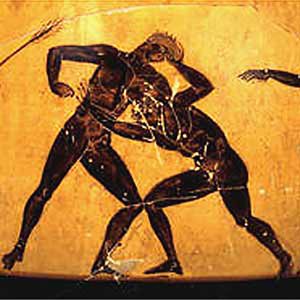Olympic wrestling stands as one of the oldest and most revered forms of combat sports. Rooted in ancient traditions, it has evolved into a dynamic, highly technical discipline showcased at the pinnacle of international athletic competition. In this article, we’ll take an in-depth look at Olympic wrestling, exploring its history, rules, techniques, and the extraordinary athletes who have left an indelible mark on this danatoto sport.
I. Wrestling Through the Ages: A Historical Tapestry
- Ancient Origins:
- Wrestling’s roots can be traced back to ancient civilizations, with evidence of early forms of the sport found in cave paintings and ancient texts.
- Olympic Legacy:
- Wrestling was a cornerstone of the ancient Olympic Games and remains a core discipline in the modern Olympic program.
- Cultural Significance:
- Wrestling holds deep cultural significance in many regions, with unique styles and traditions developed around the world.
II. Rules of Engagement: The Basics of Olympic Wrestling
- Weight Classes:
- Athletes compete within designated weight categories, ensuring a level playing field and fair competition.
- Scoring System:
- Points are awarded for various actions, including takedowns, throws, and maintaining control on the mat.
- Time and Rounds:
- Matches are divided into rounds, with the duration varying based on the level of competition. Athletes vie for supremacy within these timeframes.
III. The Art of Wrestling: Techniques and Styles
- Freestyle Wrestling:
- The most dynamic and widely practiced style, freestyle wrestling emphasizes throws, takedowns, and ground wrestling. It allows for a wide array of offensive and defensive maneuvers.
- Greco-Roman Wrestling:
- In Greco-Roman wrestling, athletes are prohibited from attacking their opponent’s legs. This style focuses on throws and upper body techniques, showcasing tremendous upper body strength and technique.
- Folkstyle Wrestling:
- Popular in the United States, folkstyle wrestling places a strong emphasis on control and ground wrestling, with a unique scoring system.
IV. The Elite Athletes: Legends of the Mat
- Alexander Karelin (Russia):
- Known as “The Russian Bear,” Karelin is considered one of the greatest wrestlers of all time. He won multiple Olympic gold medals and World Championships in Greco-Roman wrestling.
- Saori Yoshida (Japan):
- Yoshida dominated women’s freestyle wrestling, winning an unprecedented 13 consecutive World Championships and three Olympic gold medals.
- John Smith (USA):
- Smith is revered for his technical prowess in freestyle wrestling. He won two Olympic gold medals and four World Championships in the 1990s.
V. The Mental and Physical Demands of Olympic Wrestling
- Intense Conditioning:
- Wrestlers undergo rigorous training regimens to build strength, endurance, and agility, crucial for executing explosive moves and enduring the demands of a match.
- Mental Toughness:
- Wrestling demands mental resilience, requiring athletes to stay focused, adapt to changing situations, and maintain composure under intense pressure.
- Strategic Acumen:
- Success in wrestling often hinges on a wrestler’s ability to read their opponent, exploit weaknesses, and execute precise techniques at critical moments.
VI. Wrestling on the World Stage: The Olympic Experience
- Olympic Glory:
- The Olympics represent the pinnacle of achievement for wrestlers worldwide. Competing on this global stage is a testament to an athlete’s dedication and skill.
- Unforgettable Moments:
- From iconic victories to displays of sportsmanship, Olympic wrestling has produced some of the most memorable moments in the history of the Games.
Conclusion: Wrestling’s Enduring Legacy
Olympic wrestling’s enduring legacy is a testament to the sport’s universal appeal and enduring significance. From ancient arenas to the grand stages of the modern Olympics, the discipline continues to captivate audiences with its blend of athleticism, technique, and indomitable spirit.



